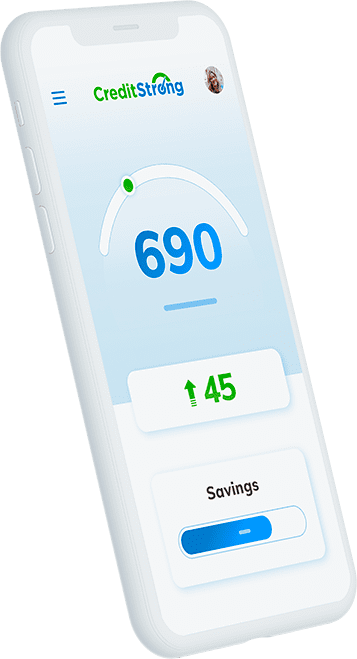High-Risk NAICS Codes and How to Avoid Them

Build strong business credit
with your EIN

The North American Industry Classification System (NAICS) organizes businesses into groups based on their offerings and activities by assigning them six-digit codes.
Lenders often use these NAICS codes to gauge businesses’ risk factors. As a result, they can have a significant impact on your chances of qualifying for funding.
Here’s what you should know about these codes, including which ones lenders consider high-risk NAICS codes, how they affect your ability to get financing, and what you can do to avoid them.
A List of High-Risk NAICS Code Industries
The following is a list of high-risk codes that the NAICS compiled by cooperating with various banking professionals. While it’s not comprehensive or officially sanctioned, it’s handy when you’re trying to avoid ending up in a high-risk category.
High Risk NAICS Codes
| Business Types | NAICS Codes | ||||
| Auto Dealers | 441110 | 441120 | |||
| Recreational Vehicles | 441210 | ||||
| Motorcycles | 441221 | ||||
| Boat Dealer | 441222 | ||||
| Aircraft Dealer | 441229 | ||||
| Automotive Parts | 441310 | ||||
| Automotive Repair | 811111 | 811113 | 811118 | 811121 | 811224 |
| Casino | 713210 | 811224 | |||
| Travel Agency | 561510 | ||||
| Check Cashing | 522390 | ||||
| Currency Exchange | 523130 | ||||
| Electronic Fund Transfer | 522320 | ||||
| Money Transmitter | 522390 | 522291 | |||
| Money Order Sales | 522390 | ||||
| Pawn Shop | 522298 | ||||
| Jewelry Store | 423940 | 448310 | |||
| Jewelry/Gem | 448310 | ||||
| Consumer Loans | 522291 | ||||
| Convenience Store | 445120 | ||||
| Convenience W/ Gas | 447110 | ||||
| Restaurant | 722110 | 722211 | 722212 | ||
| Liquor Store | 445310 | ||||
| Tobacco Distributors | 424940 | ||||
| Vending Machine | 454210 | ||||
| Parking Garage | 812930 | ||||
| Retail | 442110 | 444210 | 451110 | 452111 | 442210 |
| Retail | 444220 | 452112 | 442299 | 446110 | 451120 |
| Retail | 452998 | 443111 | 448120 | 443110 | 443112 |
| Retail | 448150 | 451130 | 453210 | 443120 | 448190 |
| Retail | 451140 | 453220 | 444110 | 448210 | 451211 |
| Retail | 453310 | 444120 | 451220 | 453998 | |
| Private ATMs | 454210 | ||||
| Non-Governmental Charity | 813219 | ||||
The Occupational Safety and Health Administration (OSHA) also issues a list of NAICS codes representing risky industries that must submit injury and illness reports. Cross-reference the two lists to get more insight into which NAICS codes to avoid.
How NAICS Codes Affect Your Ability To Get Financing
The United States government initially used Standard Industrial Classification (SIC) codes to identify industries. However, SIC classifications were inconsistent and less specific than the NAICS system. You still have a SIC code, but it’s less relevant today.
Nowadays, the U.S. Census Bureau uses NAICS codes to facilitate the collection, analysis, and distribution of statistical data regarding businesses and the economy in the United States.
However, the NAICS isn’t the only organization to use these codes as a frame of reference. Many industries consider them a way to gain insight into businesses at a glance.
For example, an insurance company may use them to find their clients appropriate coverage and set their insurance premiums. If you provide the wrong code, they could deem you too risky to insure or charge you higher premiums.
Creditors use NAICS codes to do something similar, which is why they can affect your ability to get a business credit card or loan. Lenders may have lists of NAICS codes that they consider too risky and automatically reject applications from those businesses.
Alternatively, they may subject them to more rigorous underwriting standards. If businesses manage to qualify despite that, they’ll often end up with less favorable terms, such as higher interest rates.
How To Avoid High-Risk NAICS Codes
For better or worse, there’s no central government agency responsible for assigning NAICS codes. Instead, business owners generally get to select their own. As a result, you may be able to choose one that lenders see as low risk.
To find your NAICS code, visit the NAICS online search tool. You can use it to narrow down available options by entering keywords or exploring a list of industries.
Once you’ve selected one, there’s no need to file anything to make it official. Just provide it when third parties ask you for it. For example, the Internal Revenue Service (IRS) requires that you report your NAICS code on your tax return.
Of course, while you may have some flexibility in your code choices, you can’t just select the lowest risk NAICS code you can find. You must still be honest and choose one that accurately reflects your business activities.
There may be consequences if someone discovers you’ve used an inappropriate code to avoid being labeled a high-risk business. For example, if your tax deductions are too different from other businesses with your NAICS code, the IRS may audit you.
Occasionally, agencies may choose one for your business for their own purposes without your input. For example, the Census Bureau may assign one using your application info if you request an Employer Identification Number (EIN) from the IRS.
While it’s not guaranteed, you may be able to determine whether someone has assigned you a NAICS code by checking your business credit reports. The commercial credit bureaus document your NAICS code in your file if they find one.

Can You Have More Than One Primary NAICS Code?
Businesses often have more than one revenue-generating activity. For example, a car dealership might sell new cars, used vehicles, and auto parts. There’s a NAICS code for each of these, which raises the question of which to choose.
Generally, businesses with multiple activities should select a primary NAICS code that represents their most significant income stream. It’ll be the one that third parties prioritize when determining if you’re in a high-risk industry.
For example, say that 60% of a car dealership’s revenue comes from new cars, 20% from used, and 20% from auto parts. Typically, they should use the code for new car dealers.
Because your primary NAICS code represents your most significant business activity, you can’t have more than one. However, businesses can sometimes use secondary NAICS codes to represent their additional lines of business.
Not all organizations accept multiple NAICS codes from one establishment, but it does happen. For example, the System for Award Management (SAM), where businesses register as contractors with the federal government, accepts up to 10 codes per business.
Can You Change Your NAICS Code?
Because there’s no official way for a business owner to select a NAICS code in the first place, you don’t need to do anything special to change it. If you’d like to use a new code, start providing it when third parties ask for one in the future.
It’s a bit more complicated to change a code you disagree with if some external organization is already using it to refer to your business. In these cases, the NAICS recommends that you contact the agency directly to request the change.
Some places where you may wish to update your NAICS code after choosing a new one include the commercial credit bureaus. While they don’t have dedicated systems for changing your code, they do have tools for updating your company information:
- Experian: Request Updates to Experian Business Credit Report
- Equifax: General Equifax Business Customer Support
- Dun & Bradstreet: View & Update Your Company Information
To be safe, be ready to demonstrate why the code they selected for you is inaccurate and how your suggested replacement makes more sense.
Financing Options for High-Risk Industries
If you select or get assigned a high-risk NAICS code, it may limit your ability to qualify for business loans. Traditional lenders may automatically deny your requests for credit or subject your applications to more rigorous underwriting requirements.
If you can’t solve the issue by changing your NAICS code, here are some ways you can improve your chances of getting financing for business development purposes.
Find Niche Industry Financing Companies
Traditional financial institutions like banks and credit unions have the strictest underwriting criteria. As a result, they’re the most likely to deny applications from businesses with high-risk NAICS codes.
One way to get around this is to look for financing companies that specialize in providing funding to businesses in your particular industry.
For example, National Funding offers small business loans to retail companies specifically, even though other lenders consider retail a high-risk niche.
Look for Financing Backed by Collateral
Collateral is another powerful tool for reducing lenders’ perceived risk and improving your chances of obtaining financing. Secured loans let lenders seize certain assets to cover losses, making them much easier to qualify for in most situations.
High-risk businesses can use that to their advantage. For example, instead of pursuing unsecured installment loans or lines of credit, you might consider using equipment loans or invoice factoring.
If you participate in real estate investing, another great option is to leverage any equity you have in existing properties.
Build Your Business Credit
A high-risk NAICS code reduces your chances of qualifying for funding, but you can mitigate the effect with a great business credit score. It’ll help you overcome the increased underwriting requirements that some lenders will require of you.
One of the best ways to improve your business credit is with a Credit Strong business credit builder loan. They’re similar to traditional installment loans but are strictly for business credit-building purposes.
We keep your proceeds in a savings account as collateral during the loan term. As a result, we can offer accounts without worrying about business credit scores. Except for sole proprietors, any business can qualify with three months in business and an EIN.
Once you sign up, we’ll report the tradeline and your payments to the commercial credit bureaus, improving your credit score.
If you reach your credit improvement goals before the end of the repayment, you can cancel early with no penalty, and we’ll refund you the principal balance you’ve paid off to date. You have nothing to lose, so give it a try today!
CreditStrong for Business is the only 0% interest business credit builder in the nation
